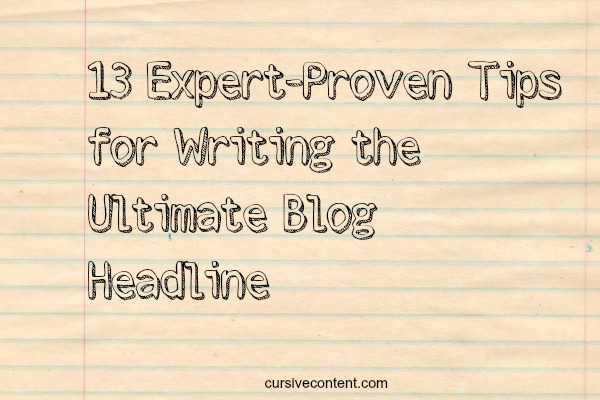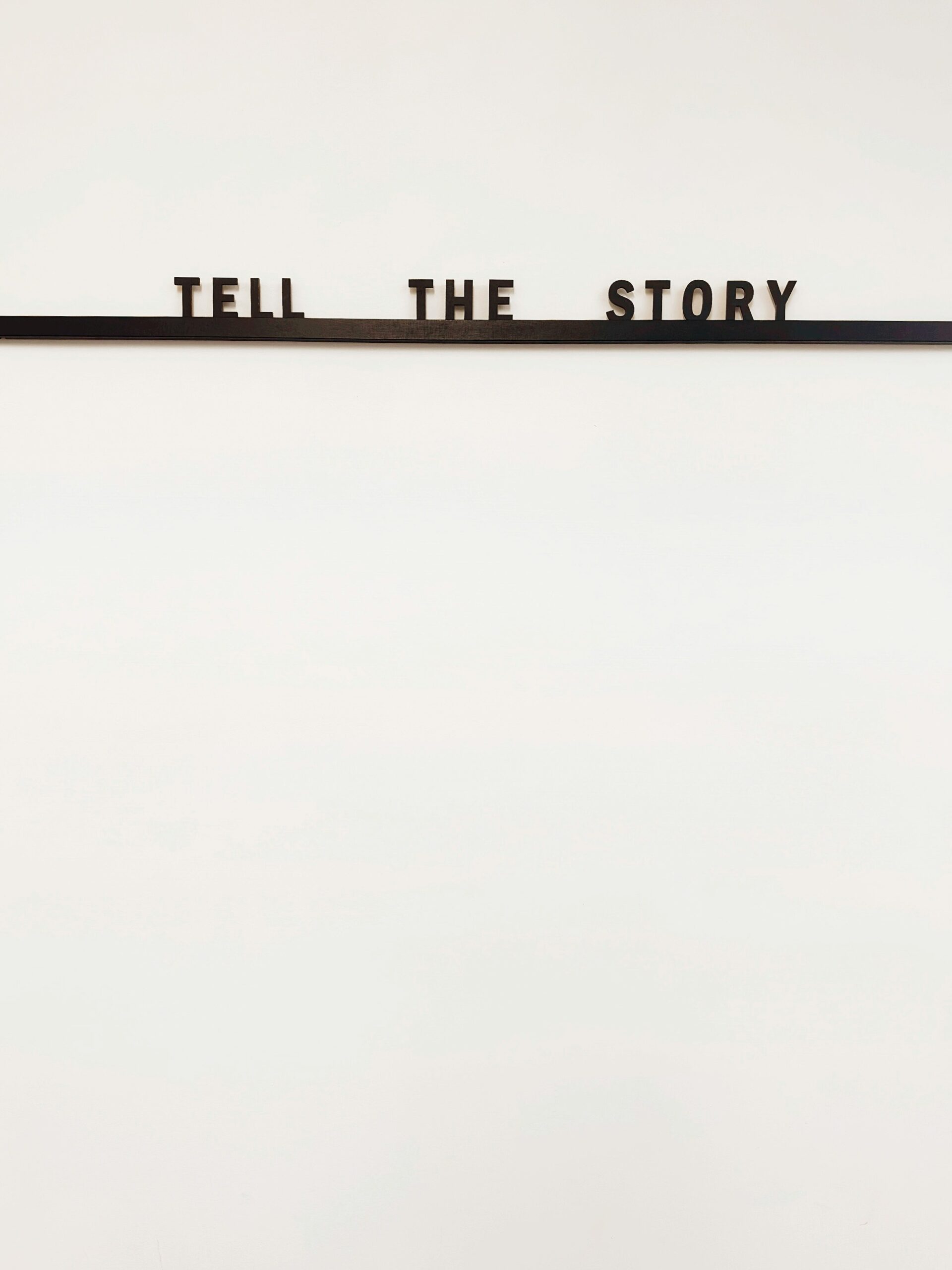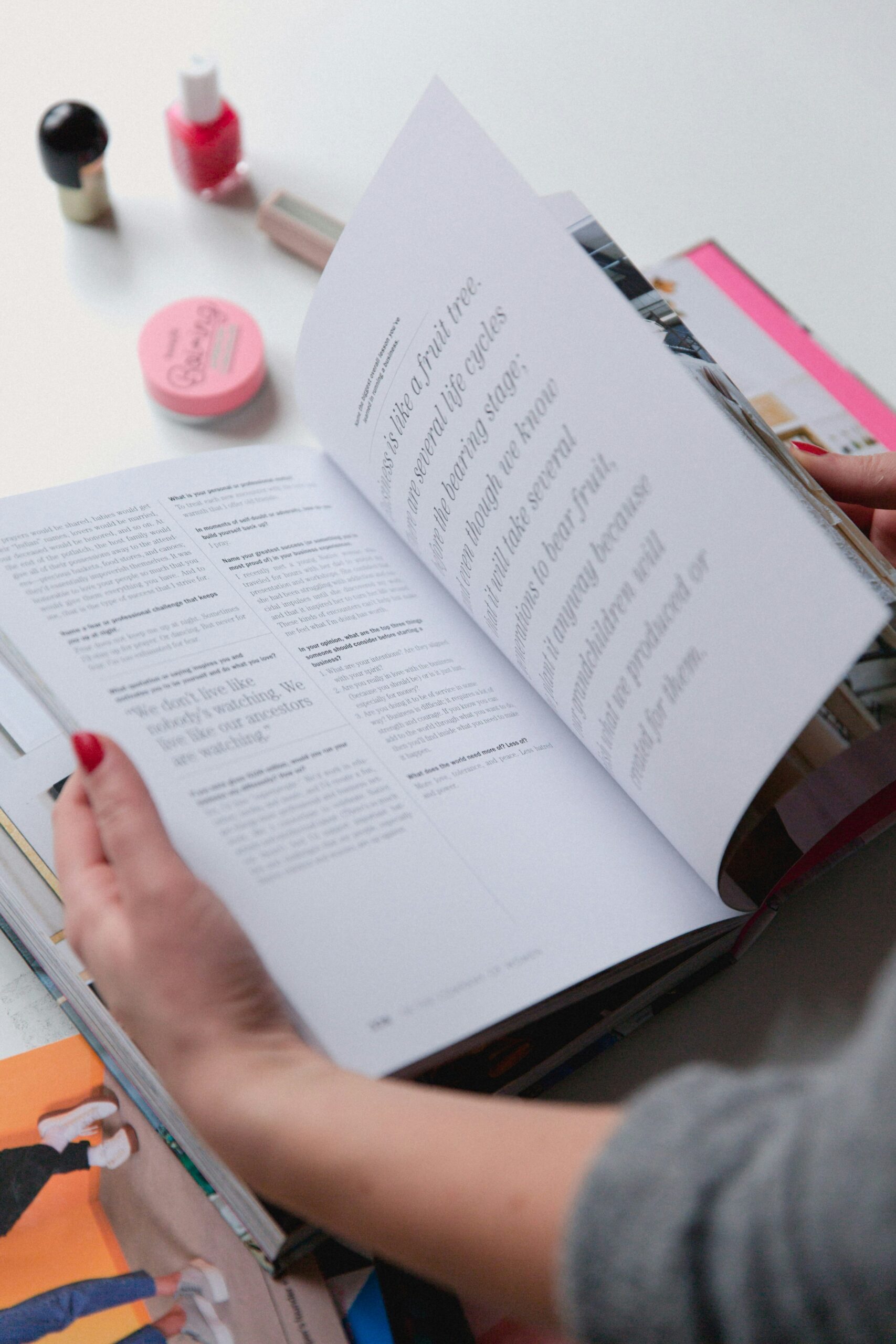13 Expert-Proven Tips for Writing the Ultimate Blog Headline

You’re reading this blog post right now because of its headline.
It made you a promise …
“writing the ultimate blog headline”
… and told you what it would provide …
“expert-proven tips”
… which intrigued you enough to click through from a social network or from our amazing weekly eNewsletter (hint hint, subscribe in the right sidebar).
And now it’s time to deliver on that promise. Because that’s what a good headline is all about, right? Getting people excited to read the awesome content you’ve labored over for hours on end to make perfect. I mean, if people don’t click through to read your content … well, you know the saying about a tree falling in a woods and all that.
The problem is, the headline-writing gurus at Copyblogger report that on average, 8 out of 10 people will read headline copy, but only 2 out of 10 will read the rest. So how do you get your audience engaged enough via your headline to read your awe-inspiring words?
Here are the tops headline-writing tips I’ve collected from some of my favorite content resources. Read them, save them, and then go write that killer headline.
Create a swipe file.
“A swipe file is an easy way to capture ideas, thoughts, and inspiration for future blog posts. It can also provide much-needed motivation on those days when you feel less than creative. As you peruse the web, pay attention to blog post titles that make you take notice. Now add that title to your swipe file. …The key is to create a running list of potential blog titles that you can use as creative inspiration on those days you suffer from writers block.” – Rebekah Radice
Spend half your time on the headline.
“People put way too much emphasis on the specifics of the piece of content and not enough on the packaging. We’ve seen the case where a headline made the difference between 1,000 views and 1 million views.” – Upworthy’s Peter Koechley via FastCompany
Be specific.
“Use your headline to tell people exactly what problem you’re going to solve or exactly what solution you’re going to provide … and the clicks will stream in quickly and clearly. (You know, like Netflix videos used to.)” – Jerod Morris via Copyblogger
“Nothing is as uninteresting as vagueness. Specific and concrete facts, on the other hand—particularly ones that form pictures in our minds—are intensely interesting.
So the first thing you must do to create a winning headline is use objective, quantifiable language. Figures are excellent; they imply research, which adds to your perceived legitimacy. But all kinds of specificity are good: names, descriptions—including of your reader himself; Mel Martin made millions writing “For people who…” headlines—titles, examples, projections, results, and so on.
Avoid subjective claims that anyone can make. “The number one ___”, “The leading ___”, etc. These are meaningless; like claiming your newborn is the most beautiful baby in the world. Everyone says that kind of thing, and studies show these sorts of claims actually reduce readership significantly, because people give them the same sort of attention they give to banner ads—i.e., none at all.” – Bnonn via KISSmetrics
Make an audacious promise.
“Promise your reader something valuable. Will you teach her how to learn a new skill? Will you persuade her to do something she’s never done before? Will you unlock an ancient mystery? What you want to do is dare your reader to read the article. Without over-promising, be bold. Be seductive (in the most innocuous way possible, of course). Be dangerous. And then deliver what you promised.” – Jeff Goins
Let it stand alone.
“On the Web, most people who encounter your headline probably won’t have any context for it. Imagine your headline not as it looks above your article, but as it looks on the home page of an unrelated site, in someone’s Twitter or Facebook streams, in a search result. Would someone unfamiliar with your site get what the story’s about?” – Matt Thompson via Poynter
Avoid crafting titles at the expense of clarity.
“While it’s tempting to write the best title possible to drive readership and other stats, the bottom line is that it it may be misleading. Be prepared for your readers to call you out if they think you’ve played them.” – Heidi Cohen
Consider the four “u’s”.
“Here are four rules of thumb to keep in mind. They’re taught as the “four u’s” of headline writing by a number of copywriters:
- Your headline should be unique.
- Your headline should be ultra-specific.
- Your headline should convey a sense of urgency.
- Your headline should be useful.
You can rarely accomplish all four in a single headline, but if you can at least include one or two then you’re bound to write a headline that’s more likely to compel your prospective customers to continue reading.” – Neil Patel & Joseph Putnam via QuickSprout
Remember, numbers win prizes.
“List posts are an incredibly overused tactic, but the ugly truth is that they still work. The reasons for the enduring popularity of lists posts are fairly obvious. People want easily digestible articles and are often curious to find out what examples or tips have made it onto the list.
Finding the ideal number is more of a challenge, however judging by our most popular posts from last year it appears that anything over 10 does the trick. Readers want to know that they’re going to get their money’s worth, so the more tips, hints and examples the better.” – David Moth via Econsultancy
Consider the “why”.
“The “Why” is … a good headline format because it opens a door in the readers mind. The headline says why something is important or relevant or secret or effective, but to find out exactly why that is, you have to read the article (walk through the door).
This is called opening a loop, a very effective psychology. You create curiosity by opening a loop that the brain has to close, and in order to do so the article must be read. New headline writers often make the mistake of closing the loop in the headline, answering the question in the headline before the article is read. Be careful you don’t do this.
“Why” headlines also work fantastically as a stated question, including the all-powerful question mark (?). This is the ultimate open loop – state a question and the reader gets the answer if they read the article.” – Yaro Starak via Entrepreneurs-Journey
Context and credibility matter.
“A headline cannot be written nor analyzed in a vacuum. The audience it is targeting matters, as does its context. Hence why you cannot just take any proven headline template and use it on any post, expecting it to deliver results. You must choose the right one for the right audience. It’s not easy, especially at first, but you build your “headline intuition” over time with practice.” – Jerod Morris via Copyblogger
Show “how to”.
“The crazy thing about the popularity of “how to” content is the fact that people don’t really want to learn how to do anything else. They’ve got plenty to do already, thank you.
But it’s exactly due to the crazy busy lives we lead that prompts us to seek out tips, tricks, and methods to make things better, easier, and ultimately happier for ourselves. Focusing on the “better, easier, and happier” is the key to great “how to” headlines and content.” – via Copyblogger
Test your headlines using Twitter or email marketing.
“Recently I’ve been running an experiment: 1) Tweet an insight, idea, or quote; 2) See how many people retweet it; 3) If it catches, then write a blog post elaborating on the topic.
This works because the headline is key. It spreads the content behind it. This is especially true on Twitter, but it’s also true for news sites that will pick up and syndicate your content. If that headline is viral and the content behind it is high quality, there’s a multiplier effect – sometimes a difference of 100X or more. Naturally, you want to optimize the flow of how people interact with your content, starting with what they see first: The title.” – Andrew Chen
“Schedule a few tweets that link to the same post using alternative headlines. The trick is to use a custom bit.ly link or other short URL service that allows you to track clicks. At the end of each day, calculate the clicks, retweets, and comments that you received with each headline. Which headline methods worked better than others?
The same test can be done with an active email marketing list. Most email software allows you to A/B test headlines and email subjects. Get into the habit of trying headlines against each other. Make sure you document the results and use what you lean to improve your writing abilities.” – ProBlogger
Observe your own actions.
“Day in and day out, we are all using Google to perform a variety of searches. What is it that you are searching for? Like it or not, Google knows. If you are logged into your Google account, you can view your web history at https://www.google.com/dashboard/. Review your results to see the headlines that you ultimately clicked on. Your readers are probably similar to you in what they would choose, too.” – ProBlogger
Bonus Tip: Don’t be ridiculous.
The Guardian recently shared a website called HeadlinesAgainstHumanity, which demonstrates how headlines are becoming more deceptive and outrageous in order to trap people into the click-through. The site asks you to guess the real headline between two fairly ridiculous examples. Check it out for some inspiration of what NOT to do … but don’t say I didn’t warn you: the site it pretty addicting.
Do you have any additional headline-writing tips or resources to add? Share them below, and for more inspiration, check out our Headline Writing for Content Marketing Pinterest board.
MORE ARTICLES
-
 Clarity in 50 Words or Less: How to Write Your School’s One-Sentence Story
Clarity in 50 Words or Less: How to Write Your School’s One-Sentence Story -
 The 4 Building Blocks of a Strong School Story (and Why AI Needs Them)
The 4 Building Blocks of a Strong School Story (and Why AI Needs Them) -
 How to Stop ChatGPT from Making Your School Sound Generic
How to Stop ChatGPT from Making Your School Sound Generic -
 What Should Your School Do with Its Blog Now That AI Is Changing Search?
What Should Your School Do with Its Blog Now That AI Is Changing Search? -
 What Is Your Private School’s Bold & Unifying Big Promise?
What Is Your Private School’s Bold & Unifying Big Promise? -
 Viewbook Best Practices for Private Schools
Viewbook Best Practices for Private Schools -
 AI Writing Prompts to Power Private School Storytelling
AI Writing Prompts to Power Private School Storytelling -
 How to Write a Magnetic Private School “About” Page
How to Write a Magnetic Private School “About” Page
Thanks for the great information. One thing I learned in my Copywriting courses is that there is no mass audience anymore, so we need to target our readers more.
How long do you think a headline should be? And should you use punctuation?
Hi Debbie – I think length really depends, and it’s always a great idea to test headline options to see which one works better for your audience. As for punctuation? I use it when the headline is two thoughts, like a question and short statement, but otherwise I don’t end headlines with punctuation. Hope that helps!